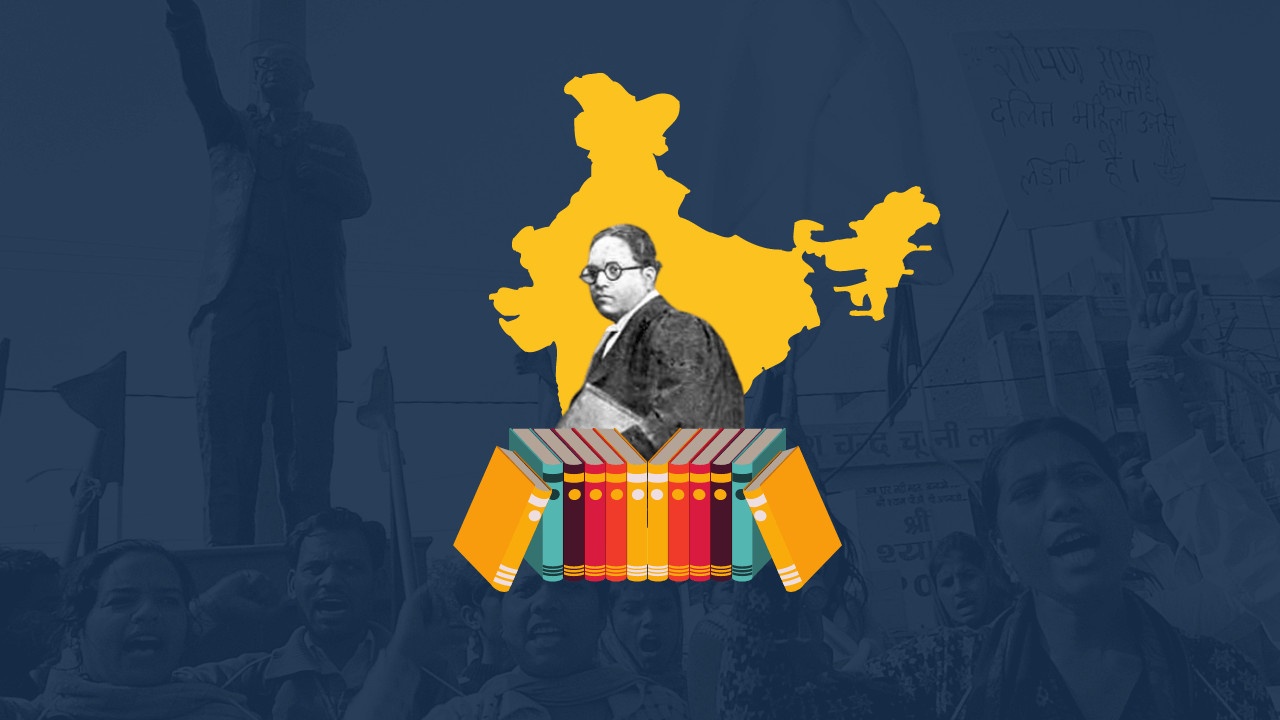Updated on 13th July 2021
They say that education is the greatest equaliser. That it facilitates upward mobility for the marginalised and presents a holistic understanding of the world for students. Textbooks — which are one of the most tangible reflections of an education system — open doors for students to contemplate the past and understand the present. But, under the influence of dominant social forces, these rooms of reflective learning shrink. When textbooks uphold the hierarchies they claim to break, they run the risk of losing their pedagogical function.
Caste is one such social hierarchy that permeates every sphere of our society. Yet, each one of us knows at least one person who denies its seriousness. To uncover ways in which textbooks water down the precariousness of caste, we examine how the caste system and anti-caste struggles in India are being addressed in NCERT’s History and Political Science textbooks for grades 8, 9, and 10.
**
At home, it was an unspoken rule that non-Brahmins were not allowed in our kitchen. Our guests, irrespective of their caste, were always greeted with warmth. But, they did not enter the kitchen. Either before they arrived or after they left, my grandmother would always enquire nonchalantly, “yav mandhi?”, which is a Kannada euphemism for “Which caste do they belong to?” We drew arbitrary lines to justify our casteist practices. “Kitchen is a private space.” “But we do not actually mistreat anyone.”
None of us at home thought this was odd, let alone unjust. Amidst echo chambers of kin and friendships, textbooks became that only crevice through which I cottoned up to the cruelties of caste. In my 9th grade, the NCERT textbook had a chapter called Clothing: A Social History. The section ‘Caste Conflict and Dress Change’ explained the Upper-Cloth Revolt that took place in the Travancore province of 19th century India. As I flipped through the pages, my 15-year-old self realised that objects as mundane as our clothes have histories of communities woven into them. And that the fabric of our society has been stitched together by acts of violence, dominance and resistance.
The Textbook: A Site of Contestation
In 2016, a circular was issued by the CBSE which said, “no questions from the section ‘Caste Conflict and Dress Change’ should be asked in the exam.” In 2019, the entire chapter was dropped.
The process of textbook-writing constantly wobbles under the influence of various social and political factors. On the one hand, textbooks aim to promote equality by focusing on issues of the marginalised. The National Curriculum Framework (NCF) of 2005 states, “the study of social sciences [must be] from the perspective of marginalised groups…”. It directs textbook writers to sensitise students to the issues of minorities such as Scheduled Castes, Scheduled Tribes and women. On the other hand, textbooks serve the interests of the dominant sections of society and reproduce cultures of exclusion. By deleting chapters, textbooks erase the histories of these same communities. They become vehicles of monolithic narratives and further societal biases against those they claim to include.
This is not to say that NCERT textbooks do not address caste at all. Unit 4 in the 8th-grade Political Science textbook “Social Justice and Marginalisation” says, “…marginalisation is seldom experienced in one sphere. Economic, social, cultural and political factors work together to make certain groups in society feel marginalised.” Chapter 8, “Confronting Marginalisation” explains how the constitution defines laws and affirmative action to protect oppressed castes. However, implicitly and explicitly, through revisions, language, content selection and organisation, NCERT textbooks uphold caste hierarchy.
De-linking Oppressor from the Act of Oppression
In one of his speeches, B.R. Ambedkar said that land-holding in India is a matter of not just economic livelihood but also social status. Land has been a currency that largely fills the pockets of the dominant caste groups (primarily Brahmins, Kshatriyas and Vaishyas). Titles, now carried as surnames, such as ‘Deshpande’ (record-keeper of lands) and ‘Kulkarni’ (village accountant) were adopted by Brahmins in Maharashtra and northern Karnataka. Similarly, Bhumihars in Uttar Pradesh and Bihar, and Rajputs in Rajasthan, owned the majority of land and earned profits out of oppressed caste peasants’ labour. It is this exploitation that finds words in the 2021 song Enjoy Enjaami, where Arivu’s grandmother laments, “I planted five trees. Nurtured a beautiful garden… My garden is flourishing. Yet my throat remains dry.” Under British control, dominant caste Zamindars continued to enslave oppressed caste peasants by forcing them to cultivate commercial crops and pay high revenue.
The chapter ‘Ruling the Countryside’ of the 8th-grade History textbook traces the various revenue systems and the peasant rebellion in British India. However, throughout the lesson, there is no mention of the caste locations of both the landowners and the peasants. The text anonymises not just the oppressed but also the oppressor. By omitting this crucial connection between caste and land ownership, textbooks create deliberate gaps in knowledge.
What gets missed is, one, that the peasant rebellion was against both, the British and oppressor-caste Zamindars. Two, the role that the caste system played (and continues to play) in determining land ownership in India.
According to the Agriculture Census of 2015-16, the percentage share of Schedule Castes in operational land holdings is only 8.65%, whereas the Savarna population holds 79.33%. The 2011 Census states that 70% of Dalit farmers are labourers on farms owned by others. As Ambedkar continues in the same speech, “…and no Hindu wishes that an untouchable should possess a piece of land so that he may reach a higher status than his community is entitled to under the social system.”
By de-linking the oppressor from the act of oppression, the textbook shields dominant caste communities from confronting their iron-fisted history. And how do we talk about freedom from oppression without locating the oppressor?
Obscuring Present Realities of Caste
The link between caste and land ownership appears only in chapter 8 of the 8th-grade History textbook, ‘Women, Caste and Reform’ under the sub-heading ‘Caste and Social Reform’. The text reads, “But the poor, the people from low castes, saw this [migration to cities] as an opportunity to get away from the oppressive hold that ‘upper’-caste landowners exercised over their lives and the daily humiliation they suffered [in villages].”
Back in school, this made perfect sense to me. Cities, after all, scored better on all developmental parameters: job opportunities, education and basic facilities. Dominant castes have swallowed the notion that caste is a rural phenomenon, not realising that cities are no different for the oppressed castes. Before I moved to Mumbai in 2018, an acquaintance told me, “All inequalities fade away here. The rich and poor, ‘upper’ caste and ‘lower’ caste, all travel on the same local train. They even live next to each other!” But the city presented stark inequalities that my Brahmin acquaintance seemed to have missed. My apartment’s elevator had a poster stuck next to it that said in bold, “Only for goods, maids and delivery persons.” Just like lands in villages, high rises in cities thrive on the labour of the working class who mostly belong to the oppressed caste communities. Even as domestic workers, they are segregated and discriminated against. Savita Kambale, a migrant domestic worker in Pune told The Wire that several families hire ‘upper’ caste workers for the kitchen and ‘lower’ caste workers “for other purposes [such as cleaning and washing].”
The poor, working-class population in India intersects overwhelmingly with the oppressed castes. While class and caste are not interchangeable terms, they are tightly interlinked and even inseparable in our country. By discussing caste and urban migration in the context of reform, the textbook reinforces the false narrative that caste is more prevalent in India’s villages, and that cities somehow “blur” caste differences.
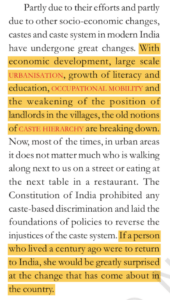
Even in chapter 4 of the 10th-grade Political Science textbook, ‘Religion, Gender and Caste’, this myth plays itself out. The extract claims that social phenomena such as economic development, urbanisation, education and occupational mobility are breaking old notions of caste hierarchy (see figure 1).
But SC and ST communities are segregated into ghettos in all metropolitan cities, where basic necessities such as health, education, housing and water etc. remain largely inaccessible. “The entire city [nation, too] is built on a monumental foundation of caste,” writes Pranav Kuttaiah. Moreover, the socioeconomic mobility that has been realised by a few — on account of their efforts to enforce constitutional promises — does not imply that caste is breaking down. Studies show that people with Dalit and Muslim names are less likely to find homes in cities. The caste system is embedded not only in obvious forms of exploitation and discrimination but also in intangible patterns of thought and attitudes — a facet that is completely glossed over in the textbooks. So, contrary to what the text claims, if a person who lived a century ago were to return to India today, there is little to no change that can surprise them; dominant castes have found ways to keep caste malleable.
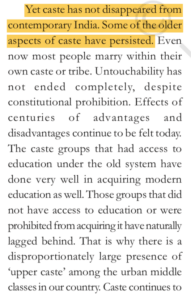
While the following paragraph of the text does clarify that caste “has not disappeared” (see figure 2), both these paragraphs together seem like a merry-go-round of an arrangement. At best, it offers a poor disclaimer of caste’s prevalence; at worst, it dilutes the grim realities of caste. It seems as if the country has deployed enough policies to “reverse injustices of caste”, but it is just taking time.
Such treatment of caste in India only allows oppressed castes to dissociate themselves from their agency as oppressors and bystanders of violence. It eases them into being passive onlookers in the movement to realise justice. Paulo Friere, in his book ‘Pedagogy of the Oppressed’ calls this passivity a farce. He says, “the oppressor is [in solidarity] with the oppressed only when he stops regarding them as an abstract category and sees them as persons who have been unjustly dealt with…Human beings are not built in silence, but in word, in work, in action-reflection.”
To Condemn Or Not To Condemn Caste?
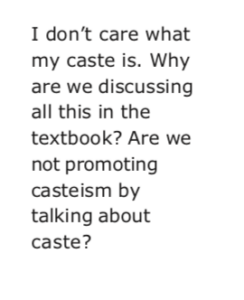
While discussing various social issues, oppressor caste circles often circumvent caste. Even as they present themselves as critical of caste discrimination, they often define and police conversations around caste. “I don’t care about your caste. You don’t care about mine, why should we even bring it up?” is a sentiment we have all heard being expressed many times.
Chapter 4 of the 10th-grade Political Science textbook poses this poor rhetoric as a food-for-thought question to the students (figure 3). While there is no problem in encouraging dialogues around caste, such questions can create more doubt and resistance.
Instead of taking a firm stand, the textbook resorts to ambiguous anti-caste articulations and further feeds into caste resentment among oppressor castes.
Misrepresenting and Silencing Anti-Caste Voices
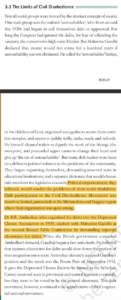
Chapter 2 of the 10th-grade history textbook, ‘Nationalism in India’, sketches the various movements of the freedom struggle. Under the sub-heading: ‘The Limits of Civil Disobedience’ (emphasis mine), the chapter addresses the lack of Dalit participation in the Civil Disobedience movement (figure 4).
B. R. Ambedkar was acutely aware that freedom from the British alone would not bring any relief for the oppressed castes. Whether it was the peasant rebellion or the Civil Disobedience Movement, Dalits in India have always called for the freedom struggle to be anti-caste and not just anti-colonial. This standpoint still remains unacknowledged in the mainstream discourse around independence in India, including our textbooks. Their refusal to participate was, therefore, not a limit but a characteristic of the Civil Disobedience Movement. The text, however, presents the entire story from a dominant-caste perspective. It even reduces the demand for separate electorates to a “clash” instead of calling it what it was — a protest.
The extract also misreports anti-caste thought when it says, “They [Dalit leaders] believed political empowerment would resolve their social disabilities.” The Dalit Movement has relentlessly emphasised the importance of social reform along with political democracy — a fact that the textbook erroneously ignores. In fact, B.R. Ambedkar, in his final speech at the constituent assembly, said, “…[we must] not be content with mere political democracy. We must make our political democracy a social democracy as well. Political democracy cannot last unless there lies at the base of it social democracy.”
Instead of giving more space to these ideas of social justice, the textbooks amplify M.K. Gandhi’s idea of caste — who has been criticised by several Dalit leaders for his patronising attitude. Ambedkar said that the word ‘Harijan’ has now become equivalent to the term ‘Asprishya’ (Untouchable) and that it must be withdrawn. Oppressor castes (through words such as Harijan) take the meaning of oppression out of their language and make it more palatable for their sensibilities. Instead of situating anti-caste voices at the centre, textbooks end up silencing them even further.
This culture of silencing anti-caste voices also prevents students from understanding that ‘caste’ is inherently unequal. We consider condemning only certain aspects of caste, but not caste itself. You and I might pull up an instance of an honour killing and wax lyrical about its injustices, but find ourselves silent when family members “jokingly” utter casteist slurs. Textbooks, among other sites of social life, allow us to espouse this hierarchy of outrage.
Caste is Not Just a Relic of our Past
A school textbook is thus written under the push and pull of various social and political forces. The constitution demands education to be egalitarian; by this extension, curriculum framework and textbooks must uphold principles of justice and equality. But education can also become a tool of furthering oppression at the hands of the dominant sections of the society. James Baldwin, in his address to school teachers, highlights this paradox of education when he says that the purpose of education is to inculcate the ability to question the world in a society that wants people to obey rules. “If a society succeeds in this, that society is about to perish.”
What school textbooks actually do is thus far from what they ought to do. They leave students with disconnected pieces of information that paints an incomplete and superficial picture of caste. Alongside other social spheres of influence such as families, textbooks essentially mislead our youth into believing that caste is not a pressing issue. This travesty in itself is the pressing issue which every one of us must concern ourselves with today. As Baldwin says, “The obligation of anyone who thinks of himself as responsible is to examine society and try to change it and to fight it – at no matter what risk. This is the only hope society has. This is the only way societies change.”


